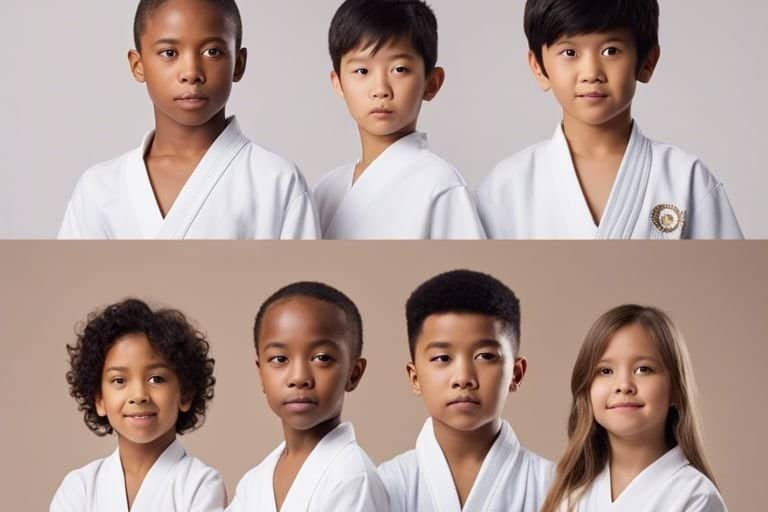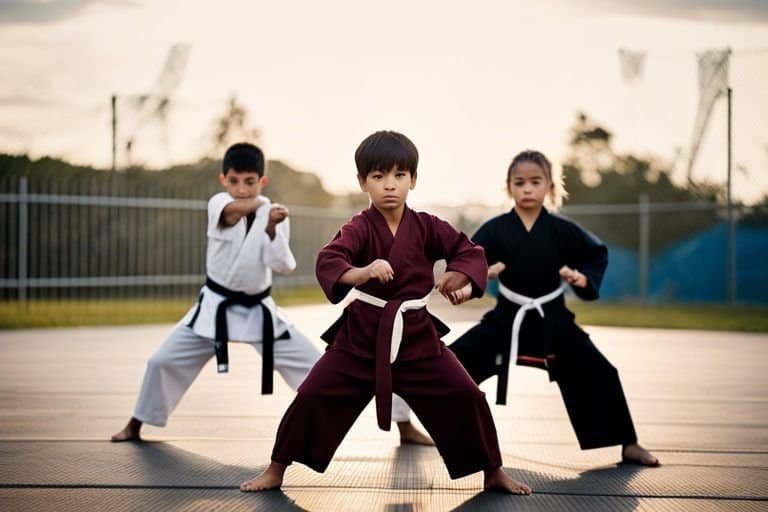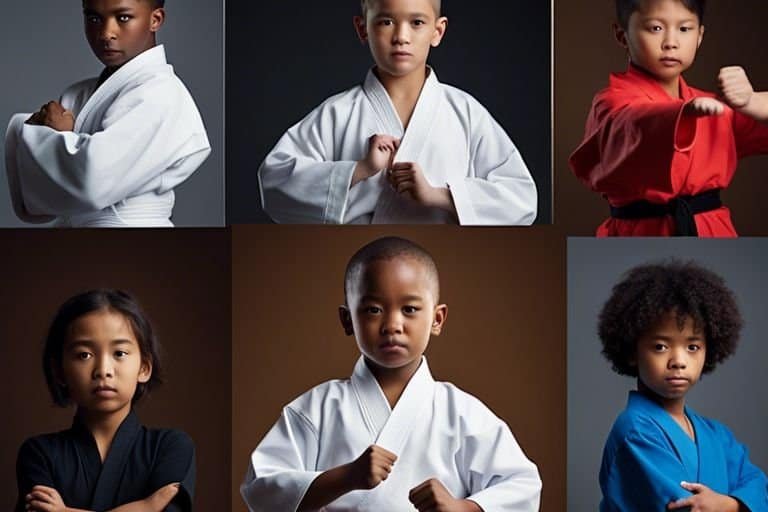Enrolling your child in martial arts can have profound positive impacts on their physical and mental well-being. Not only does it provide a rigorous form of physical exercise, but it also instills discipline, improves focus, and boosts their confidence and self-esteem. Additionally, the self-defense skills they learn in martial arts can equip them with the knowledge and ability to protect themselves in dangerous situations. This ancient practice offers a holistic approach to healthy child development, promoting strength, resilience, and a sense of purpose.
Key Takeaways:
- Physical Development: Martial arts can help improve your child’s strength, flexibility, coordination, and overall physical fitness.
- Mental Development: Engaging in martial arts can promote discipline, focus, and self-confidence in children, leading to better performance in school and other areas of life.
- Social Skills: Through martial arts training, children can develop valuable social skills such as respect, teamwork, and the ability to handle conflict in a controlled and respectful manner.
Physical Benefits of Martial Arts for Children
Some children are naturally more physically inclined, while others may need encouragement to stay active. Martial arts can benefit children of all physical abilities, helping them develop crucial skills and improve their overall physical health.
Enhancing Coordination and Motor Skills
Arts like karate, taekwondo, and judo require precise movements and coordination, which can significantly enhance a child’s motor skills. As they master various techniques and forms, children learn to coordinate their body movements, improving their overall physical agility and dexterity.
Moreover, the repetitive nature of martial arts training can also enhance a child’s hand-eye coordination, fine-tuning their ability to synchronize their actions and reactions, leading to improved overall motor skills.
Building Strength and Stamina
With regular practice, martial arts can help children build both physical strength and endurance. The techniques and exercises involved in martial arts training, such as striking, blocking, and sparring, require the use of various muscle groups, leading to improved overall strength.
This increased strength is further complemented by enhanced stamina, as martial arts training involves cardiovascular exercises and endurance drills that push children to go beyond their physical limits, building their stamina and resilience.
This holistic approach to physical fitness not only benefits children’s overall health but also instills a sense of discipline and determination in them.
Improving Flexibility and Balance
For children, flexibility and balance are crucial components of their physical development, and martial arts provide an ideal platform for improvement in these areas. The stretching exercises and movements in martial arts help children achieve greater flexibility, reducing the risk of injuries and enhancing their overall mobility.
Additionally, the balance-oriented techniques and stances in martial arts help children develop better equilibrium and stability, which can have a positive impact on their overall physical coordination and performance in other physical activities.
Mental and Emotional Advantages
Despite the physical nature of martial arts, the mental and emotional benefits play a significant role in the development of children. From fostering discipline and focus to boosting self-esteem and confidence, martial arts can have a profound impact on a child’s overall well-being.
Fostering Discipline and Focus
On top of the physical training, martial arts instills discipline and focus in children. The structured environment of a martial arts class teaches kids the importance of following instructions, respecting authority, and honing their concentration. These qualities not only benefit them within the dojo but also carry over to other aspects of their lives, such as academics and extracurricular activities.
The consistent practice of techniques and the pursuit of skill advancement require determination and perseverance, fostering a strong sense of discipline that can help children navigate challenges and setbacks in their personal and academic lives.
Boosting Self-Esteem and Confidence
The progressive nature of martial arts training, where students earn belts and recognition for their achievements, contributes to a significant boost in self-esteem and confidence. As children overcome obstacles and master new skills, they develop a sense of accomplishment and self-assurance. This newfound confidence extends beyond the dojo, empowering them to tackle various challenges with resilience and a positive mindset.
Discipline, self-control, and resilience are essential components of martial arts training that contribute to the enhancement of a child’s self-esteem and confidence, laying a strong foundation for their emotional development.
Teaching Respect and Teamwork
The traditional values and etiquette upheld in martial arts cultivate a deep sense of respect in children. From bowing to instructors and partners to following the code of conduct, students learn to show respect for themselves and others. Additionally, martial arts classes often involve partner drills and group activities that emphasize teamwork and mutual support, fostering a sense of camaraderie and cooperation among peers.
Teamwork, empathy, and respect are integral aspects of martial arts that contribute to the holistic development of children, helping them become well-rounded individuals with strong emotional intelligence and social skills.

Choosing the Right Martial Art for Your Child
For parents considering enrolling their child in martial arts, choosing the right discipline can be a daunting task. With so many different styles available, it’s important to consider your child’s individual needs and interests to make the best choice.
Overview of Different Martial Arts Styles
Different martial arts styles offer unique techniques, philosophies, and approaches to training. Karate emphasizes striking and kicking, while taekwondo focuses on high kicks and fast hand strikes. Judo teaches throws and grappling, and muay thai emphasizes clinching and knee strikes. Kung Fu incorporates a wide range of techniques, including striking, kicking, and grappling. Understanding the differences in these styles can help you choose the one that best suits your child’s interests and goals.
Factors to Consider: Age, Interest, and Physical Ability
Martial arts can be beneficial for children of all ages, but it’s important to consider their age, interests, and physical abilities when choosing the right style. Recognition your child’s unique personality and preferences can help you find a discipline that will keep them engaged and motivated. Additionally, some styles may require a certain level of physical fitness, so it’s important to consider your child’s athleticism and coordination.
- Age: Consider the appropriate age for starting each martial art.
- Interest: Take into account your child’s preferences and what motivates them.
- Physical Ability: Assess your child’s level of coordination and athleticism.
Recognizing the importance of matching the martial art to your child’s age, interests, and physical abilities is crucial for ensuring they have a positive and fulfilling experience.
Integrating Martial Arts into Your Child’s Lifestyle
Keep in mind that integrating martial arts into your child’s lifestyle requires careful planning and consideration. It’s important to ensure that your child’s physical and mental well-being are the top priorities when incorporating martial arts into their routine.
Setting Realistic Goals and Expectations
With any new activity, it’s essential to set realistic goals and expectations for your child. Whether it’s mastering a specific technique or earning a new belt, establishing achievable milestones can motivate your child and foster a sense of accomplishment.
A supportive and understanding approach from parents and instructors will go a long way in helping your child develop a healthy mindset towards progress and success in martial arts.
Encouraging Consistency and Commitment
Realistic|||expectations about the time and effort required for martial arts practice should be communicated to your child. Consistency and commitment are essential for progress in martial arts, and parents can play a critical role in encouraging their child to stay diligent in their practice.
A structured routine and positive reinforcement can help your child understand the importance of dedication and hard work, both on and off the training mat.
Balancing Martial Arts with Academic Responsibilities
The balance between martial arts and academics is crucial for your child’s overall development. It’s important to ensure that the time devoted to martial arts practice does not interfere with academic obligations.
With careful planning and time management, your child can fully benefit from the lessons learned from martial arts training while excelling in their academic pursuits.

Summing up
Following this exploration of how martial arts can benefit your child’s physical and mental development, it is clear that this ancient practice offers a multitude of advantages. From improved physical fitness and coordination to increased discipline and focus, martial arts can provide children with the tools they need to succeed in all areas of their life. By enrolling your child in a martial arts program, you are not only investing in their physical health, but also in their emotional and mental well-being. The positive impact of martial arts on children’s development cannot be understated, making it a valuable activity for parents to consider for their child’s overall growth and success.
FAQ
Q: What are the physical benefits of martial arts for children?
A: Martial arts can improve a child’s strength, flexibility, coordination, and overall physical fitness. It also promotes cardiovascular health and builds endurance.
Q: How can martial arts contribute to a child’s mental development?
A: Martial arts teach children important values such as discipline, focus, and respect. It also helps boost their confidence and self-esteem.
Q: At what age can a child start learning martial arts?
A: Children as young as 4 years old can start learning martial arts. Many dojos offer specialized classes for younger children to introduce them to the basics of martial arts in a fun and safe environment.
Q: Are there any risks involved in children learning martial arts?
A: When taught by qualified instructors and practiced in a safe environment, martial arts are generally safe for children. Injuries are rare and can be minimized with proper supervision and training techniques.
Q: How can martial arts help with bullying and self-defense?
A: Martial arts teach children how to defend themselves while also emphasizing the importance of avoiding physical confrontation whenever possible. It also helps build the confidence needed to handle bullying situations effectively.



